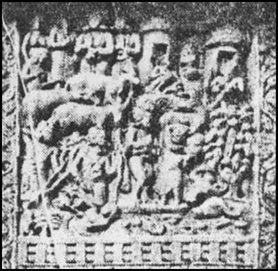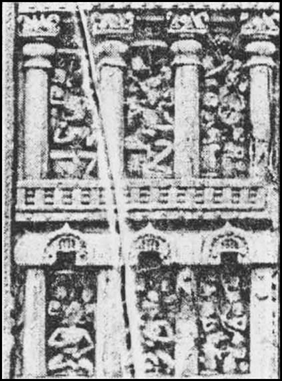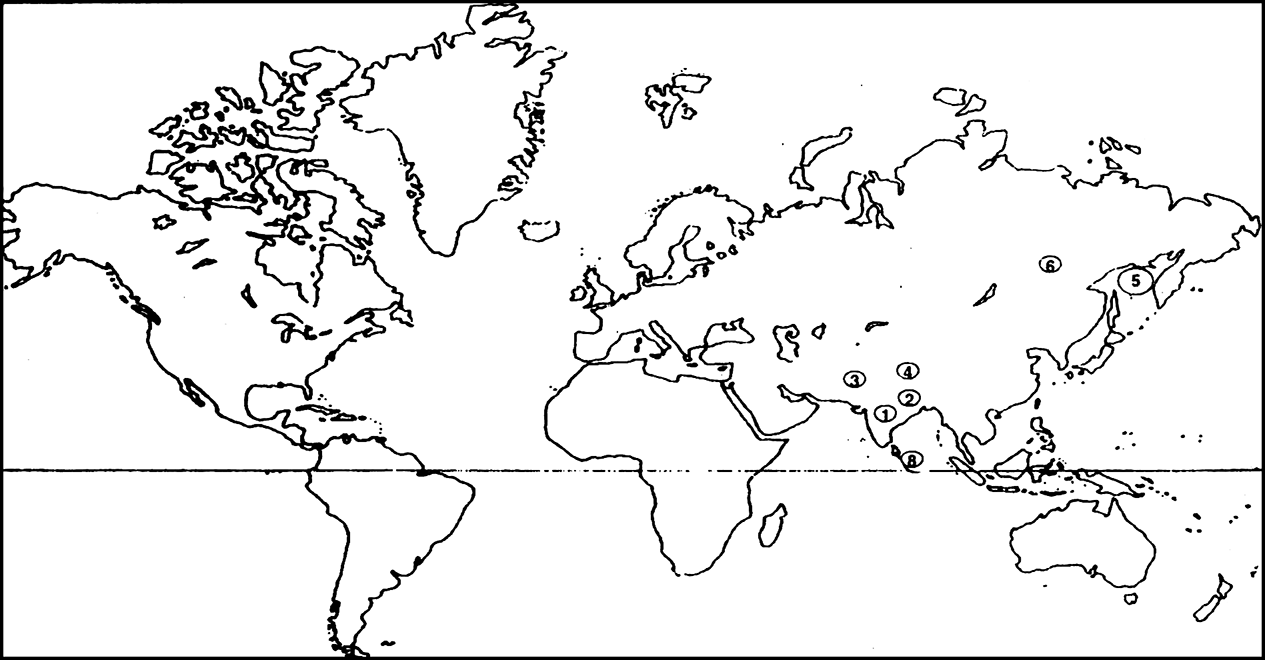Thinkers, Beliefs And Buildings
Buddhism in practice: This is an excerpt from the Sutta Pitaka, and contains the advice given by the Buddha to a wealthy householder named Sigala:
In five ways should a master look after his servants and employees... by assigning them work according to their strength, by supplying them with food and wages, by tending them in sickness; by sharing delicacies with them any by granting leave at times ...
In five ways should the clansmen look after the needs of samanas (those who have renounced the world) and Brahmanas: by affection in act and speech and mind, by keeping open house to them and supplying their worldly needs.
There are similar instructions to Sigala about how to behave with his parents, teacher and wife.A. Which were the five ways through which Buddha wanted a householder to look after his employees?
B. How should clansmen treat Samanas and Brahmanas?
C. What according to you should have been the instructions to teachers?
D. What was the Buddhist sangha? Give any two features of the sangha?
(a) by assigning his servants and employees work according to their strength,
(b) by supplying them with food and wages,
(c) by tending them in sickness,
(d) by sharing delicacies with them, and
(e) by granting leave at times.
B. (a) The clansmen should look after the needs of samanas (those who have renounced the world) and Brahmanas: by affection in act and speech and mind.
(b) By keeping open house to them (i.e., samanas and Brahmanas).
C. According to me the teachers should have been instructed to love and to have affection for their disciples. They should give them food, clothes, shelter and religious preachings.
D. (a) It was a momentic order of the Buddhists union where the Bikhshus (monks) and Bhikshunis (lady monks) lived as commune were called Sangha.
(b) All the members in Buddhism enjoyed equal rights irrespective of their varna and castes.
(c) They used to work in a democratic work. All matters were discussed in a democratic atmosphere in these Sanghas.
Sponsor Area
Some More Questions From Thinkers, Beliefs And Buildings Chapter
Were the ideas of the Upanishadic thinkers different from those of the fatalists and materialists? Give reasons for your answer.
Summarise the central teachings of Jainism.
Discuss the role of the begums of Bhopal in preserving the stupa at Sanchi.
Or
“The Begums of Bhopal played a significant role in preserving the remains of stupa at Sanchi.” Support this statement with suitable evidence.
Read this short inscription and answer the questions that follow:
In the year 33 of the maharaja Huvishka (a Kushana ruler), in the first month of the hot season on the eighth day, a Bodhisatta was set up at Madhuvanaka by the bhikkhuni Dhanavati, the sister’s daughter of the bhikkhuni Buddhamita, who knows the Tipitaka, the female pupil of the bhikkhu Bala, who knows the Tipitaka, together with her father and mother.
A. How did Dhanavati date her inscription?
B. Why do you think she installed an image of the Bodhisatta?
C. Who were the relatives she mentioned?
D. What Buddhist text did she know?
E From whom did she learn this text?
Why do you think women and men joined the Sangha?
To what extent does knowledge of Buddhist literature help in understanding the sculpture at Sanchi?
Figures I and II. are two scenes from Sanchi. Describe what you see in each of them, focusing on the architecture, plants and animals, and the activities. Identify which one shows a rural scene and which an urban scene, giving reasons for your answer.
Fig.: I

Fig. : II
Discuss the development in sculpture and architecture associated with the rise of Vaishnavism and Shaivism.
Discuss how and why stupas were built.
On an outline world map, mark the areas to which Buddhism spread. Trace the land and sea routes from the subcontinent to these areas.
Mock Test Series
Sponsor Area
NCERT Book Store
NCERT Sample Papers
Sponsor Area